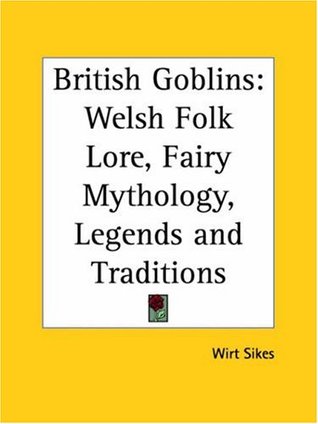More on this book
Kindle Notes & Highlights
In Arthur’s day and before that, the people of South Wales regarded North Wales as pre-eminently the land of faerie.
that distant country was the chosen abode of giants, monsters, magicians, and all the creatures of enchantment.
These details are current in the Mabinogion, those brilliant stories of Welsh enchantment, so gracefully done into English by Lady Charlotte Guest,
Glamorganshire.
the little folk are no longer seen there. It is a common remark that the Methodists drove them away;
Gwyn ap Nudd.
It is nevertheless thought by Cambrian etymologists, that Morgana is derived from Mor Gwyn, the white maid;
The legend of St. Collen, in which Gwyn ap Nudd figures, represents him as king of Annwn (hell, or the shadow land) as well as of the fairies.
Collen cried out to the men to go away and hold their tongues, instead of talking about devils.
And with that Collen drew out his flask and threw the holy water on their heads, whereupon they vanished from his sight, so that there was neither castle nor troops,
corresponds with the Avalon of the Arthurian legends.
commemorated in the triads as one of the Three Losses by Disappearance, the two others being Merlin’s and Madog’s.
Madog sailed in search of America;
They are seen dancing in moonlight nights on the velvety grass, clad in airy and flowing robes of blue, green, white, or scarlet—details
The Greeks spoke of the furies as the Eumenides, or gracious ones;
the Laplander calls the bear ‘the old man with the fur coat;’
in Ammam the tiger is called ‘grandfather;’
there is a whole brood of words of this class in the Welsh language, expressing every variety of flowing, gliding, spirituality, devilry, angelhood, and goblinism.
is also doubtless allied with the Hebrew Elilim, having with it an identity both of origin and meaning.
ymenyn tylwyth teg and bwyd ellyllon; the latter the toadstool, or poisonous mushroom, and the former a butter-resembling substance found at great depths in the crevices of limestone rocks,
Shakspeare’s use of Welsh folk-lore, it should be noted, was extensive and peculiarly faithful.
and the root of numberless words signifying babyish, childish, love for children (mabgar), kitten (mabgath), prattling (mabiaith),
most notable of all which in this connection is mabinogi, the singular of Mabinogion, the romantic tales of enchantment told to the young


